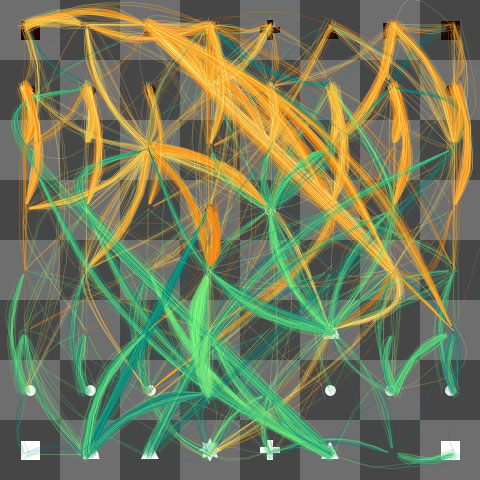- basic board visualization/awareness. By this I mean seeing the squares an outpost knight could go to. If one does not sees this or has to 'calculate' the one move squares of the knight, it is a lot more difficult to pay attention to basic forks, etc.
- Pattern/motif recognition. There is no calculation per se involved into recognizing a pin. A part of tactical play is built on this immediate recognition
- Calculation of variations. This is the 'what if'.
I am a bit surprised that you have an overwhelming supply of pattern recognition material but much less on calculation. You are somehow supposed to just get better at it as you progress along. There are, however, a couple of books that are helpful
- Thinking like a Grandmaster, Alexander Kotov.
- Improve you chess, Jonathan Tisdall
Now if one wants to think about better move selection it is a broader topic than the calculation. There again there is a large supply of strategic level material. In Jeremy Silman's books, he deconstructs the thought process of lower ranked players and introduce a structured way of thinking about the position, by listing the imbalances. This sure is important, as he points out how players tend to calculate straight away without thinking strategically in the first place. Methods of move selection are important, but I would like more input on the calculation process for the time being.
Kotov's method is intuitive. Consider candidate moves, and work your way through all the variations branch by branch
This has been criticized by many authors (see John Nunn's Secrets of Practical Chess in which the first chapter is devoted to discussing the drawbacks and improving the Calculation process), but the practical calculation advice being so sparse Kotov's methods are quite often discussed as the test bed of the calculation though process.
Jonathan Tisdall, a Norvegian GM of American origin, have interesting book of the thinking process. In the first chapter he discusses the shortcomings of the tree methods, and underlines the role of intuition and also inner dialogue. The second chapter is a description of his method of calculation. It is actually quite simple to summarize. It relies on board visualization, and henceforth blindfold chess training is very central to the process. The idea is the one of a stepping stone: one should visualize very clearly a position, from which the dynamic calculation is performed. Once the position loses clarity, one should then reset its mind on visualizing that troubling position, and then go ahead on calculating further. Given that one only has one position from which to calculate at a given time, it is theoretically possible to calculate in the way to great depth, stepping from position to position. The simplest example of the technique is the following: imagine the strating position, then without looking at a board play the following moves in your head 1. e4 Nf6 2. Nc3 d5 3. e5 d4 4. Nce2 Ne4 5. c3 dxc3. Now bring this position as the forefront of your mind and whink about white's move.
Tisdall goes on talking about how players visualize the board, citing a nineteenth century study by Binet.
Vision, the though process of the chess player, have been analyzed in great depth by Scottish GM Jonathan Rowson in his books The Seven Deadly Chess Sins and Chess for Zebras. There are too many interesting things to summarize here, and most of the material goes far above my head, but he does say that the strongest players have a very abstract view of the board. Think that it is a lot easier to think and memorize familiar chunks of information. I can imagine the castled king position with the knight on f3 as being one bit of information, not as six pieces and pawns on the board.
All this being said, what should I do now to get better ?
- Go back to my Palliser book and do tactics until my forefront sweat blood
- Same but I consciously think about the way I calculate
- Should I study some miniatures blindfold. Is this wort it ? (disclaimer: I have very poor blindfold skills. I can see some stuff, but it;s as if the diagonals are wiggly and do not quite connect. It requires me an amazing effort to see the influence of bishop in blindfold way. Maybe I should train on that).
Just to finish on a cool image: pruning out the tree in an efficient way also turns out (by chance) to be the way current chess computer thinks. Just for fun this image on a visualization of the variations form Thinking Machine 4
gl, hf


No comments:
Post a Comment